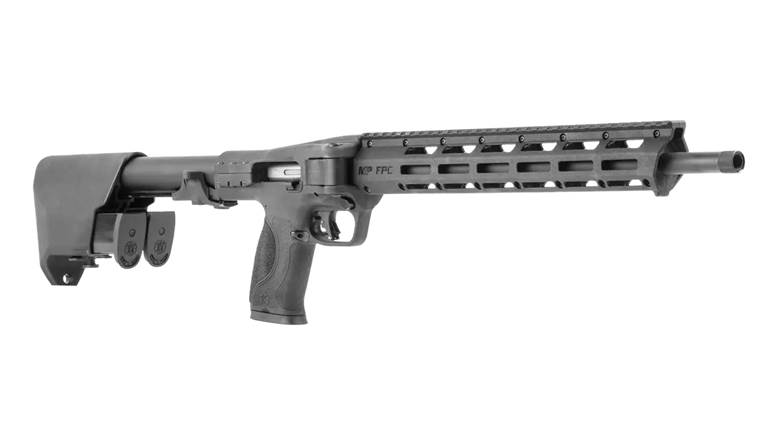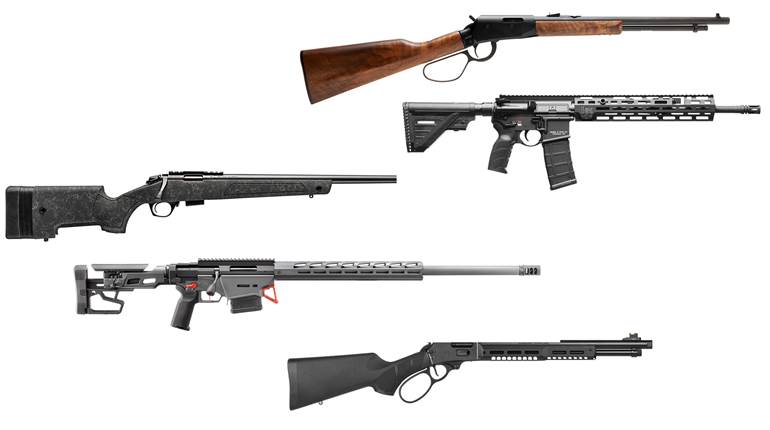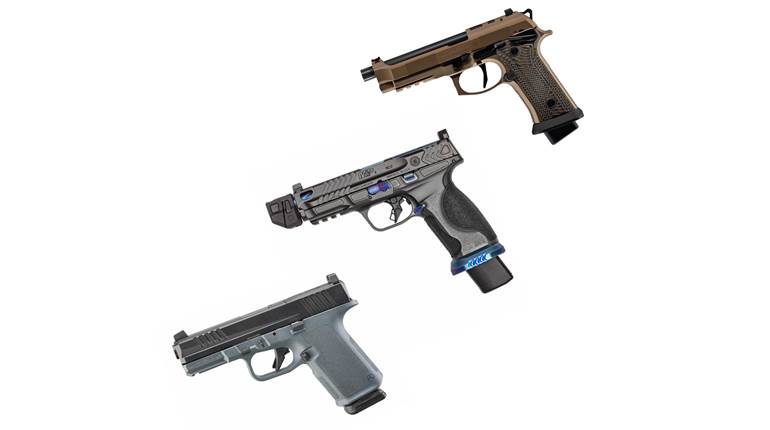
The end of November 2017 marked the arrival of the third revolver model I hoped Ruger would build when I posted the piece 5 Ruger Revolvers We’re Ready For back in 2015. The first on the scene was the 5-shot GP100 chambered in .44 Special, followed by a 3" barrel, adjustable-sight version of the rimfire LCRx.
I was rather conservative with that particular wish list, suggesting new models that were close to those already in production or had been made in the past. So, when I stated my desire for Ruger to make a hunting handgun chambered in 10 mm Auto (more commonly known as 10 mm), I asked for a single-action like the short lived limited edition Blackhawk manufactured from 1989 to 1990. But when Ruger decided it was time to launch a 10 mm wheelgun, it jumped right over the single actions and went directly to the company's excellent flagship handgun hunting model, the double-action Super Redhawk.

Several years ago I purchased the .454 Casull version of the Super Redhawk and sent it off to Cylinder & Slide to be customized. The package of features included a trigger job, shortening the barrel, giving the muzzle a recessed target crown and milling the cylinder to accept full moon clips. On this new 10 mm version of the Super Redhawk, all of the work listed above has already been done at the factory.

Ruger's double-action revolver triggers have never been bad but they've been measurably better since the introduction of the GP100 Match King in 2014. They are certainly good enough now to preclude the need for a third-party upgrade. This gun exhibited a smooth double-action trigger pull of 11 lbs. 12 oz. with a single-action trigger pull that broke cleanly with 4 lbs. 13 oz. of pressure.
This model features a 6.5" barrel instead of the more common standard 7.5" and 9.5" barrels. The shorter barrel definitely improves the gun's balance and makes it feel lighter. Full moon clips are a must for quick reloads with 10 mm revolvers because it is a rimless cartridge (three are provided with the revolver). Technically speaking, the revolver can be fired without moon clips since the 10 mm rounds are head spaced off of the cartridge mouth. But spent cases would then have to be poked out one by one with a pencil or similar tool since the ejector star would have nothing to press against in order to eject spent casings.
-
The full moon clips allow six rounds to be dropped into the cylinder simultaneously (like a speedloader) and the spent shell casings to be ejected as a single unit. A third benefit is that the moon clips will support .40 S&W cartridges making this a dual-caliber revolver. The .40 S&W shares the same parent/child relationship to 10 mm as the .44 Mag./.44 Spl. and .357 Mag./.38 Spl. Because the .40 S&W cartridge case is 0.142" shorter than the 10 mm, it can only be fired in the Super Redhawk with a full moon clip to support it.


The all-stainless-steel Super Redhawk enjoys a reputation for being one of the strongest production double-action revolvers on the market. The squared-off frame shroud extends two inches out over the bull barrel. This provides added strength at a key junction and a top strap that can be milled to support the 1" scope rings provided with the revolver. The sight system consists of a fixed front sight with an orange insert and a fully adjustable white outline rear sight.


The fluted cylinder looks even beefier than usual with 0.400" chambers milled into it. It's supported by a triple locking mechanism that secures it into the frame at the front, rear and bottom for a more positive chamber to barrel alignment. The cylinder notches are offset from the chambers for added strength. The exposed hammer is fitted with a transfer bar safety that allows the gun to be safely carried with all six chambers loaded.

The company opted to fit this model with its classic wood insert synthetic grip instead of the finger grooved Hogue models found on most of the models in the catalog.

Some folks may be wondering if the Super Redhawk, which was originally designed for the .44 Mag. and eventually chambered for the potent .454 Casull, is over built for the 10 mm cartridge. The answer is both yes and no, but this answer makes more sense when we take a closer look at the 10 mm cartridge itself.
A useful measuring stick for comparing the relative “hotness” of various center-fire handgun cartridges is the maximum pressure level index provided by the Sporting Arms and Ammunition Manufacturers’ Institute, Inc. (SAAMI). Measured in Pounds per Square Inch (psi), the 10 mm has a SAAMI maximum pressure listing of 37,500 psi. When compared to popular semi-automatic pistol cartridges, including the .45 ACP (21,000 psi), 9 mm (35,001 psi) and the 10 mm's child cartridge, the .40 S&W (35,000 psi), the 10 mm trumps them all for raw energy potential.
However, to compare apples to apples, we have to look at what the 10 mm shares in common with the rimmed revolver cartridges commonly tucked into Ruger's other big-bore hunting revolvers. It's often assumed that these revolver rounds operate at significantly higher pressure levels with much heavier bullets than the 10 mm. But take a look at the following information (drawn from various sources and compiled here) for the three revolver cartridges that usually crop up when discussing the 10 mm:
.357 S&W Mag.
Bullet diameter: 0.357"
Bullet Weights: 110 –180 gr.
SAAMI Max. Pressure: 35,000 psi
10 mm Auto
Bullet diameter: 0.400"
Bullet Weights: 135 –230 gr.
SAAMI Max. Pressure: 37,500 psi
.41 Rem. Mag.
Bullet diameter: 0.410"
Bullet Weights: 170—250-gr.
SAAMI Max. Pressure: 36,000 ps
.44 Rem. Mag.
Bullet diameter: 0.429"
Bullet Weights: 180—320 gr.
SAAMI Max. Pressure: 36,000 psi
Once again, the 10 mm comes out on top for highest potential pressure levels along with bullet weight options that overlap the .357 Mag., .41 Mag. and .44 Mag. With this data in hand, it would seem like the 10 mm's performance could be comparable to the .44 Mag. However, that's not how it works out at the shooting range.

A cartridge's performance potential versus how hot manufacturers are willing to actually load it are, in this case, two different things. Remember that the actions and frames of the typical duty size semi-automatic pistols chambered for 10 mm are not intended to operate at the same pressure levels as heavy-duty pistols (like the Magnum Research Desert Eagle) or large frame hunting revolvers. Even the duty-size models that are purpose-built for increased pressure, like the Glock G20 and the Coonan 1911s are going to have a shorter working life span if fired with full-power 10 mm all the time. This is one of the reasons factory loaded 10 mm cartridges continue to be offered in such a broad range of power levels, from not much more oomph than the .40 S&W up to heavy duty hunting loads.
As a result, factory manufactured 10 mm rounds are loaded to produce muzzle velocities ranging from around 1000 fps to 1600 fps. with muzzle-energy levels in the neighborhood of 500 ft.-lbs. to 725 ft.-lbs. This places the 10 mm's performance potential squarely in between the .357 Mag. and the .41 Rem. Mag. Although it cannot match the more potent .44 Mag, it still packs plenty of punch for harvesting medium size game and for protection against dangerous animals of the four- and two-legged varieties.

The other reason for the wide spread in 10 mm cartridge power levels is the human factor. The number one reason the FBI dumped the 10 mm back in the 1980s in favor of the .40 S&W was the increased levels of felt recoil when fired from duty pistols. When fired from the 54 oz. Super Redhawk with its 6.5" barrel, felt recoil was moderate and easy to control, especially when compared to the stout recoil of the .44 Magnum Super Redhawk or the punishing .454 Casull version.
I was curious to see how fast 10 mm bullets would fly when fired from the Super Redhawk’s 6.5" barrel. It's longer than typical semi-autos (4" to 5") but the gap between the cylinder and the barrel allows for some pressure loss. After wringing out this revolver at the range and finding it to be utterly reliable with a variety of loads, it was checked with three rounds that span the types of ammunition currently on the market. The following table compares the cartridges’ velocity and energy levels listed by the manufacturer to the revolver's actual results.

Double Tap's relatively mild practice and competition Colt National Match 180-gr. full metal jacket round gained an average of 62 fps in velocity with a best single benchrested 5-shot group of 2.92" with a five-group average of 3.20" at 25 yards using the factory iron sights. SIG Sauer offers an excellent general purpose load with the Elite Performance 180-gr. V-Crown jacketed hollow point. It gained 34 fps in velocity with a best group of 3.02" and a group average of 3.24". The most potent load of the test was Buffalo Bore's Heavy Outdoorsman round topped with a 220-gr. hard-cast flat nose bullet for deep penetration. Statistically, this round was spot on listed velocity at an average of 1208 fps with a best group of 3.08" and an average of 3.32".

The new Ruger Redhawk double-action hunting revolver provides another terrific way to work with the 10 mm cartridge. If you already shoot and reload 10 mm, now you can add a hunting revolver to your collection without adding a new caliber. Enjoy shooting with a longer barrel, and extended sight radius, moderate levels of felt recoil and an easy to install optics mounting system.

The full-moon clips provided with this revolver make reloading a quick and easy process and can also be used to safely fire .40 S&W. Because this gun is purpose-built to handle hard hitting Magnum loads, 10 mm fans can go ahead and enjoy shooting hotter rounds without the risk of a regular diet of full-house ammunition shortening the gun's working life span.

Now Ruger has two full-size, regular production 10 mms in the catalog, this Super Redhawk and the SR1911. Hopefully the company won’t stop here but will keep adding more interesting models in the days to come.

Specifications
Manufacturer: Sturm, Ruger & Co.
Model: Super Redhawk (#5524)
Action: Double-action revolver
Caliber: 10 mm/.40 S&W
Finish: Satin stainless steel
Grips: Synthetic with laminated hardwood inserts
Front Sight: Fixed black blade with orange insert
Rear Sight: Fully adjustable white outline blade, square notch
Barrel Length: 6.50"
Overall Length: 12.00"
Height: 6.00"
Cylinder Width: 1.78"
Weight: 54 oz. Unloaded
Capacity: 6 Rounds
Twist: 1:16" RH
Rifle Grooves: 6
Accessories: 3 full-moon clips, hard case, lock, owner's manual
MSRP: $1159
6-round 10 mm full-moon clips 3-pack (#90515): $14.95 at shopruger.com






































